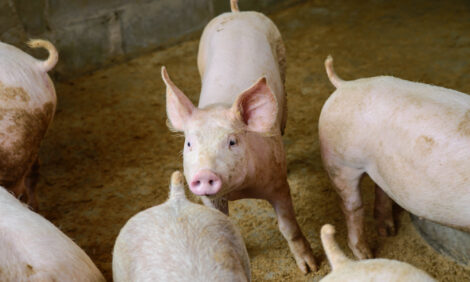



June 2004 USDA Hogs and Pigs Report Commentary by Dr Mike Brumm
US - Dr Mike Brumm, Extension Swine Specialist, University of Nebraska comments on the latest USDA Hogs and Pigs report.
|

The June 1 report released on June 25 held few surprises for traders with inventories of both breeding and market animals in the range expected.
However, the report documented the continuing changes in the US industry. Nebraska continues to struggle to maintain finishing pigs. On June 1, Nebraska had 4.6% of the US kept for market inventory with 2.49 million head. Total inventory in Nebraska was 2.85 million pigs, representing 4.74% of the US inventory. The 2.85 million pigs is the lowest total number of pigs in Nebraska since 2.70 million were reported on December 1, 1975. The 4.74% represents the lowest percentage of US inventory since December 1, 1963 when producers reported 4.70% of the US inventory on Nebraska farms.
The following table suggests Nebraska producers will continue to reduce inventory on Nebraska farms:

The table also supports the observation that Missouri and Indiana are loosing breeding herd inventory relative to the remainder of the US. This observation is evident in the individual state graphics which follow this commentary.
In April, the USDA released their estimate of the number of operations with hogs in 2003. An operation is defined as any place having one or more hog or pig on hand at any time during the year. It is unclear from the data and definition how 4-H and FFA pigs are included. In the US, there were 73,600 operations with pigs in 2003, down from 76,250 in 2002. In Nebraska, there were 3000 operations with hogs in 2003. There were 950 operations with 1-99 head, 1,050 operations with 100-499 head, 400 operations with 500-999 head, 320 operations with 1,000-1,999 head, 190 operations with 2,000-4,999 head and 90 operations with 5,000+ head.
The 1-99 head group held 1.0% of Nebraska’s inventory, the 100-499 head group had 10.0%, the 500-999 head group had 9.0%, the 1000-1,999 head group had 14.0%, the 2,000-4,999 head group had 19.0% and the 5,000+ group had 47.0%. The 3 largest group sizes (1,000+ inventory sizes) accounted for 80% of Nebraska’s inventory and represents 600 operations. Keep in mind that an inventory of 1,000 head is the approximate equivalent of a traditional 100 sow farrow-finish enterprise.
The Canadian quarterly inventory is taken on July 1 and will be released in late July. As a point of reference, I have included a graphic of previous Canadian inventory numbers.
Many times, producers comment that the reason they quit raising pigs is lack of profit. However, this explanation doesn’t explain the more rapid decline in pig numbers in Nebraska relative to the US. The following chart is a USDA data series that examines the average price received ($/cwt liveweight) included carcass merit premiums and discounts for the 10 year period 1993-2002. The average US price received for this 10 year period was $41.51. The average price received by Nebraska producers was $43.51, $2/cwt above the US average. Several economists who I have shared this data series with have remarked that the price differential may be due in part to the lack of finishing pigs in Nebraska relative to the slaughter capacity. The price differential reflects local bids versus the price paid less transportation expense for pigs delivered to Nebraska plants raised to slaughter weight in other states. This differential is readily evident when one looks at the price received for Kansas and Missouri, states which routinely ship market weight pigs to Nebraska slaughter plants.
Source: University of Nebraska, Lincoln - 28th June 2004













